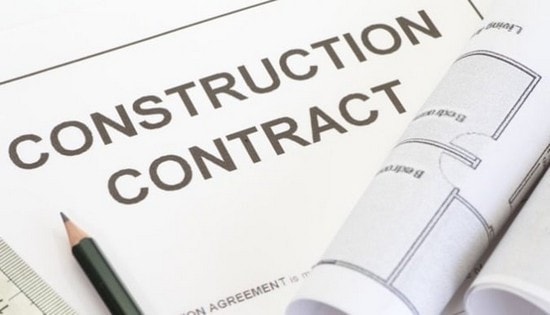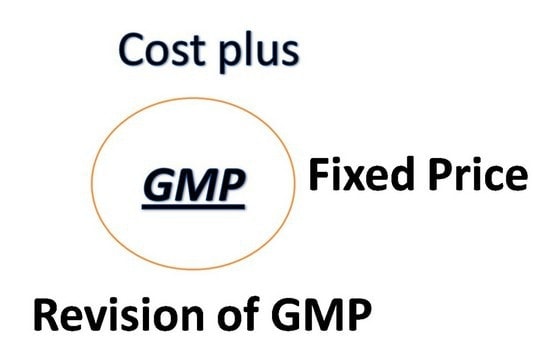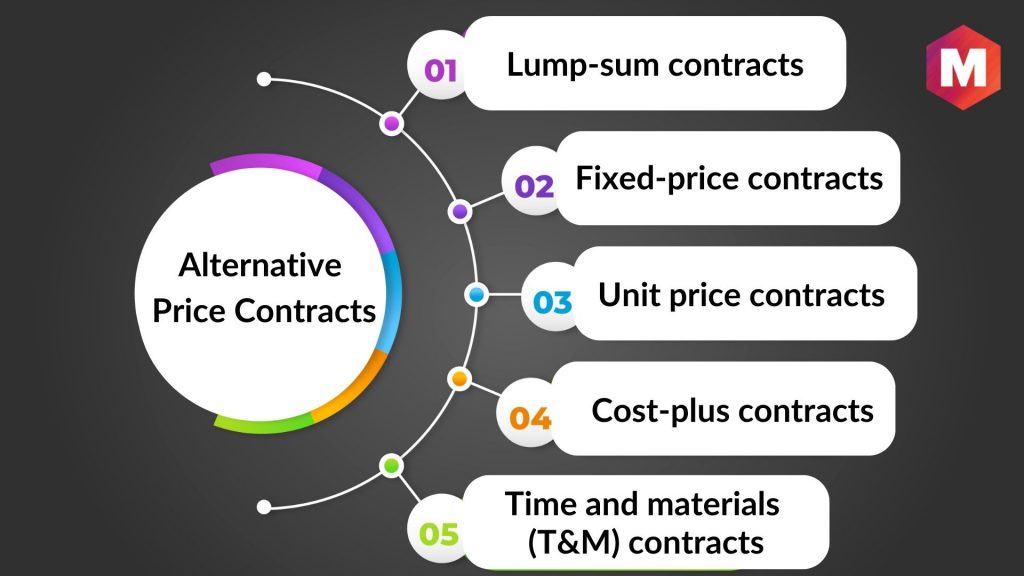A Guaranteed Maximum Price (GMP) construction contract sets the maximum project cost. It is a contract between a contractor and the project owner that specifies their roles and the contractor’s maximum payment.
A guaranteed maximum price contract is one in which the contractor promises to perform services for $1 million and guarantees not to exceed it. The contractor usually agrees not to exceed the price, finishes the project on schedule and within budget, and cover unexpected project costs.
Key Takeaways
- A Guaranteed Maximum Price (GMP) contract establishes the maximum cost of a building project, offering the owner cost certainty.
- The contractor bears any unforeseen expenditures exceeding the agreed-upon maximum price, protecting the owner from budget overruns.
- GMP contracts encourage contractors to manage resources efficiently and within budget because they are accountable for covering cost overruns.
- These contracts provide more accurate budgeting and planning because the maximum project cost is established beforehand.
- Cost reductions resulting from effective project management under a GMP contract can benefit the owner and the contractor.
Table of Contents
What is the Guaranteed maximum Price?
Guaranteed Maximum Price, or GMP, is a type of pricing used in a construction contract that sets the maximum price for a given project. The agreement between the contractor and the owner outlines both parties’ responsibilities, including a limit on the maximum amount paid to the contractor for their services.
What are Guaranteed Maximum Price (GMP) Contracts?
A Guaranteed Maximum Price GMP contract is a document that specifies the maximum price that an owner or customer will pay to a contractor for the completion of a project. The contractor agrees to provide the services for an agreed-upon maximum price and is not entitled to additional costs or payments if the project costs exceed the specified maximum price.
So, the contractor absorbs the project costs, while the owner is guaranteed not to pay more than the maximum price. The project cost savings can be significant for both parties, as the contractor can use their resources to manage the project without adding extra costs. This contract also allows for better budgeting and project planning, as the owner knows their maximum costs beforehand.
How Guaranteed Maximum Price (GMP) Contracts Work
GMP contracts are an important aspect of managing a construction project. They guarantee that the project’s final price won’t exceed a certain amount, allowing both the contractor and the client peace of mind.
First, a contract outlining the project scope of work, timelines, and target budget (the Guaranteed Maximum Price) is signed. Then, a contractor is selected to complete the project. As work progresses, the contractor monitors actual costs and ensures they don’t exceed the GMP. This includes submitting regular progress reports to the client that detail any cost changes.
When Are Guaranteed Maximum Price (GMP) Contracts Used?
Guaranteed Maximum Price (GMP) contracts work best for tasks where costs can be accurately predicted and don’t change significantly. Because they are flexible, they can be used with many different types of contracts. For example, in a hybrid with a cost-plus contract, the GMP ensures that costs don’t go overboard while still allowing for the repayment of costs and an agreed-upon profit margin. Because they are flexible, GMP contracts are a good way to handle financial risks in project development.
What if Actual Costs are different from Guaranteed Maximum Price?
In Guaranteed Maximum Price, the risk of losses arising from cost overruns is transferred to the contractor. In the instance of cost overrun, the client is not bound to compensate the contractor beyond GMP. The contractor has to bear the loss.
If costs are less than the Guaranteed Maximum Price Contract, i.e., the work gets finished at lower costs than estimated, the client enjoys a saving and is entitled to keep it solely with him. However, depending upon the contractual agreements, the owner or customer may share it with the contractor at a certain percentage of these savings.
A GMP contract typically includes labor costs, materials, and the contractor’s fee. A construction manager or other qualified expert should be consulted to ensure the GMP contract is properly drafted and all parties understand their responsibilities.
Components of a GMP Contract
| COMPONENT | DESCRIPTION |
|---|---|
| Project costs | It refers to the direct costs of the construction project comprising labor, equipment, materials, services, and other related expenses. |
| Project allowances | These are estimates of the cost of certain components which cannot be determined at the time of the GMP. |
| Contingency | A contingency allowance is added to the contract sum for unexpected costs. |
| General conditions | This refers to the rules regulating the performance of all parties involved in a construction project. |
| Contractor markup | The contractor’s markup represents the profit they will make from the project. |
Negotiated clauses in a GMP contract
It is very important to carefully negotiate the terms of a Guaranteed Maximum Price (GMP) contract so that the owner and the worker have equal risk and incentive. The parts of a GMP agreement work together to ensure everyone’s needs are met while protecting the project’s budget and quality. Let’s look at the different types of clauses that are often discussed in GMP contracts.:
- Shared Savings Incentive:
- This clause makes the goals of quality and cost-effectiveness work together because it lets any money saved over the GMP be split between the client and the provider according to a ratio agreed upon beforehand. In this case, both parties benefit: the client could save money, and the provider wants to cut costs without lowering quality.
- Contingency Allocation:
- In this case, an already-planned part of the budget is set aside for unplanned costs. This part is called the “contingency.” If these funds are still there after the job is done, the terms of the deal include how they will be distributed—either going back to the client or being split between the parties.
- Escalation Clause:
- This part considers changes in market prices significantly by giving a way to change the GMP when labor or material costs change significantly. Key points of negotiation are the exact causes and calculation methods for these kinds of changes.
- Allowance Items:
- When the costs are unclear at the start of a job, the GMP makes provisions for these unknowns. After the discussion, the unused allowance money is usually given out. The client can get the money back, or everyone can save it.
It’s important to know that while off-the-shelf contracts aren’t popular in GMP agreements, it is common for clauses like the ones above to be included. These clauses are designed to protect the investment and give the building team a reason to do their best work cost-effectively. Remember that the mix and structure of these clauses will depend on your needs and the project’s scope. As a help, think about these things:
- Match the project’s goals with its rewards.
- Keep things clear about how the risks are being shared.
- Make sure you have the freedom to deal with project-specific risks.
- Help everyone talk to each other clearly and consistently.
Uncertainty in GMP Contracts
Many people like Guaranteed Maximum Price (GMP) contracts because they limit how much a project can cost and help owners and contractors handle their risks. They are not, however, immune to the inherent risks that can affect building projects. This conversation sheds light on some important areas where GMP contracts can still be uncertain:
A list of values:
1. Schedule of Values: A detailed Schedule of Values showing the cost of labor, supplies, and services is essential in a GMP contract. Misalignments between expected and actual costs are widespread, creating uncertainty even though they are meant to bring order and predictability.
For example, current electrical systems or new green materials might need to be given more credit, which could lead to arguments.
2. Concerning Contingency Amounts: Including emergency funds in the Schedule of Values protects against costs by covering changes in costs, like new labor rates or the cost of specific parts. However, disagreements exist about why these reserves were set aside and how they should be used after the job.
Imagine that empty emergency funds become a source of disagreement because people have different ideas about how to spend them.
3. Change Orders: Project scopes may evolve even after setting a GMP, necessitating formal change orders. These changes must clearly state how they will affect the cost and plan.
Imagine adding the newest security steps to the design of a building, which would require a change order.
The worker and the client must enter these contracts with a full understanding and willingness to work together. These uncertainties can be greatly reduced by clear communication, thorough plans for emergency funds, and agreed-upon change order protocols. Ensure that your GMP contracts are carefully written to cover all possible situations. Also, watch the project and be ready to make changes and discuss as needed.
Example of Guaranteed Maximum Price Contract
For instance, a nearby nursery hires you to build a greenhouse under a GMP contract. The terms of the contract regarding price look like this: The price will be reimbursed for all the costs plus a fixed fee of $5,000 above the costs, with a Guaranteed Maximum Price of $15,000.
The maximum you can earn from this contract is $15,000. As a contractor, you would have to limit your expenses to $10,000 to earn your full fees of $5,000, or you risk losing your remuneration to that extent and paying out of your pocket.
If your total expenses for the job are $8,000, then your total earnings would be $13,000 ($8,000+$5,000). $2,000 would be the saving for your client. You may get a certain percentage of this based on the terms of the agreement.
How is GMP different from other Traditional Pricing Methods of Construction Contracts?
Other traditional methods of estimating the cost of a construction contract include the fixed-price and cost-plus methods.
GMP vs. Cost Plus
Under a cost-plus contract, the final price is determined as a total of all the expenses deemed to be incurred throughout construction work and a fixed margin of profit or remuneration above that. There is, in fact, no fixed maximum price or limit to the number of expenses.
Cost plus contract is used where the accurate construction costs cannot be estimated in advance. Often, these are quite elaborate and complex construction projects that span many years and aim to build colossal structures.
Hence, all the expenses – estimated and unexpected – have to be reimbursed to the contractor in addition to the profit margin. Thus, the client has to bear the financial risk because of sudden financial losses in the event of any hitch in the construction project.
GMP vs. Fixed Price
A Fixed-Price method is where both parties—the contractor and the client—agree on a fixed price for the construction job, irrespective of the actual expenses involved. So, GMP offers the option of covering not all costs but the actual costs within a particular range; the contractor gets only one fixed sum under the Fixed-Price method.
Revision of Guaranteed Maximum Price
In case of a change in customer mandate regarding the construction work, such as design revisions or changes in specification and quality of materials, the GMP contract contains a clause for upward revision of the GMP price to compensate the contractor under changed conditions fully.
A GMP contract often includes a clause for reimbursing the contractor for losses incurred due to natural disasters or events beyond his control, such as fire or a shutdown in one of his suppliers’ factories.
Advantages of Guaranteed Maximum Price Contracts
Advantages for Contractors
- With more customers finding GMP attractive, contractors opting for GMP will find it easier to procure contracts.
- The contractors can easily get funds for their working capital and long-term capital requirements from the banks as their construction schedules are accurately etched out and detailed. This gives the banks security in terms of their revenue generation capacity.
- The contractors are also incentivized to complete the work before schedule, keep the expenses within the budgeted estimates to avoid being penalized, and earn a percentage share of savings if the contract allows. Thus, it becomes a win-win proposition for both parties.
Advantages for Customers or Owners
- It assures the client that he won’t be penalized for the contractor’s mistakes and carelessness in the project.
- As there are few uncertainties regarding the costs and an almost accurate, crystal clear estimate of the costs – there are no unpleasant surprises.
- The workflow is quite smooth as the project details are worked out very well in advance.
Certainly! Here is the table with the differences between Contractors and Customers or Owners about the advantages each gain:
| Contractors | Customers or Owners |
|---|---|
| Increased ease in procuring contracts due to customer preference for GMP. | Security in knowing they won’t be penalized for contractor errors. |
| Easy access to funds for both working and long-term capital requirements, thanks to detailed construction schedules providing security to banks. | Few uncertainties regarding costs with a clear estimate preventing unpleasant surprises. |
| Incentives to finish work before the deadline and within budget to avoid penalties and possibly share in the savings, making it a win-win. | Smooth workflow due to well-planned project details in advance. |
Disadvantages of Guaranteed Maximum Price (GMP) Contracts
GMP contracts may also present challenges for both customers and contractors. Some of the disadvantages of GMP contract are –
Disadvantages for Contractors
- Contractors may find it difficult to estimate the potential costs when limited information is available, and they will be at risk if their estimates need to be corrected.
- The contractor may spend more time on the project than anticipated to ensure it is completed according to the contract’s terms and conditions.
- The contractor may also be unable to change the plans or specifications if identified as inadequate, which can increase costs.
Disadvantages for Customers or Owners
- The owner is usually held financially responsible for unforeseen or unknown conditions when a GMP agreement is in place.
- There is a greater risk that the contractor will do only minimum work to ensure completion within an agreed-upon budget; this may lead to lower quality than expected.
- If the client is unsure of what materials or processes are required, they may be unable to decide on certain details while signing the GMP contract, which may lead to higher costs.
Here is the table depicting the disadvantages for Contractors and Customers or Owners:
| Contractors | Customers or Owners |
|---|---|
| Difficulty estimating potential costs due to limited information, resulting in possible financial risk if estimates need to be corrected. | Financial responsibility for unforeseen or unknown conditions in a GMP agreement. |
| Spending more time on the project than expected to ensure contract terms and conditions compliance. | There is an increased risk of the contractor doing minimal work to stay within budget, potentially resulting in lower quality. |
| Inability to change plans or specifications if needed, leading to potential cost increases. | Limited decision-making ability on certain details when signing the GMP contract leads to potentially higher costs if required materials/processes are not required. |
Alternative Price Contracts
1. Lump-sum contracts
A lump sum, no-sum, or fixed-price contract involves the project owner providing the contractor with finalized project plans, construction designs, specifications, and schedules. The contractor then estimates the total cost of materials, labor, overhead, and profit. The project owner will pay the contractor the agreed-upon lump sum regardless of the actual costs incurred during the project. Contractors receive the full agreed-upon price for lump sum projects and are entitled to any savings resulting from coming in under budget.
2. Fixed-price contracts
It permits the contractor to give a project cost estimate covering labor, material, and overhead expenses. Once the project is finished, the customer can pay the agreed-upon price in one lump sum.
3. Unit price contracts
Unit price contracts estimate overall costs for each project phase using the per-unit materials costs. These contracts are particularly beneficial for projects involving direct costs to specific units, such as painting or tile installation jobs.
4. Cost-plus contracts
According to the contracts, the customer will cover expenses such as supplies, overhead, labor, and contracting. The contractor will charge either a fixed base fee or a percentage of the overall project cost for their services.
5. Time and materials (T&M) contracts
They enable the contractor to be paid for the materials and labor they provide. It can be beneficial when working on projects without established timelines.
Conclusion!
In a guaranteed maximum-price contract, the contractor provides the customer with finalized project plans, construction designs, specifications, and schedules. The contractor then estimates the project’s total cost and tries not to exceed the price. The contractor’s profit is built into this contract, and they are compensated for any savings coming in under budget.
FAQs
Q: How are contractors paid in a guaranteed maximum-price contract?
A: Contractors are paid based on the estimated cost of the project. They are not paid a set fee; they receive the agreed-upon price once the project is completed, usually in one lump sum.
Q: What is the Construction Manager at Risk (CMAR)?
A: In GMP contracts, the general contractor is a construction manager at risk (CMAR). This means that the CMAR oversees the project’s development stage and guides the client on project design, scope, budget, materials, construction challenges, and other important aspects. The role of the CMAR is to help the contractor create a clear and honest Guaranteed Maximum Price (GMP) that both parties can agree on.
Liked this post? Check out the complete series on Marketing


